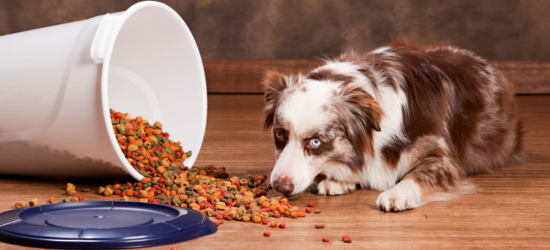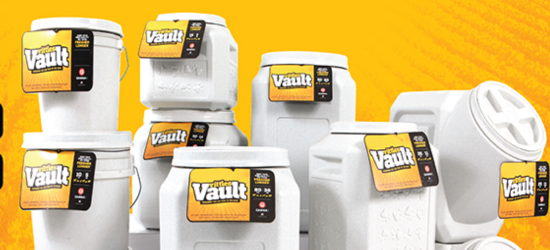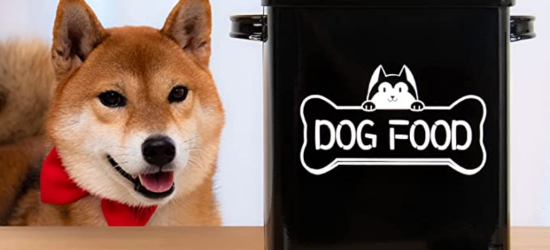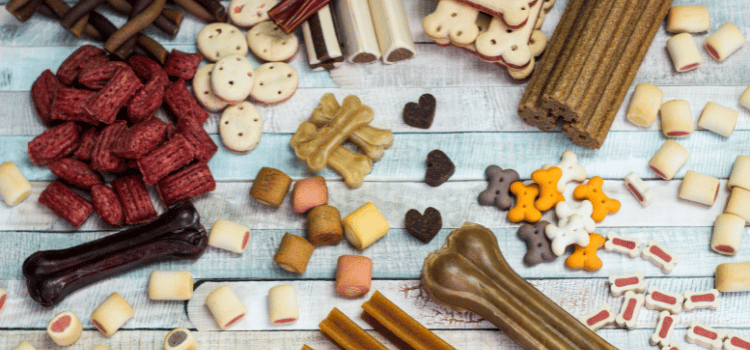
Pet food containers are specifically designed containers used to store pet food. They come in different shapes and sizes to accommodate different types and amounts of pet food.
Pet food containers are usually made from materials that are safe for storing food, such as plastic, metal, or glass. Some containers are airtight to help keep the food fresh for longer periods and prevent insects or rodents from accessing it.
Pet Food Containers
When selecting a pet food container, it is important to consider the size of your pet and how much food they consume, as well as the type of food you are storing. Some pet food containers come with measurement markings to help you accurately portion out your pet’s food.
It is also important to regularly clean and sanitize pet food containers to prevent the buildup of bacteria or other harmful organisms.
Additionally, pet food containers should be stored in a cool, dry place away from direct sunlight and other sources of heat to maintain the quality of the food.
What Are Pet Food Containers Made From?
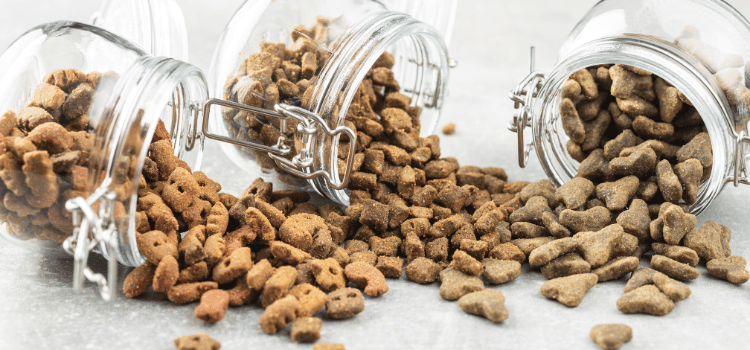
Pet food containers can be made from various materials depending on the manufacturer, cost, and intended use.
The most common materials used to make pet food containers include:
Plastic pet food containers – Many pet food containers are made from plastic, which is lightweight, durable, and affordable. High-density polyethylene (HDPE) and polypropylene (PP) are two common types of plastic used in pet food containers.
- Metal pet food containers – These are often made from aluminum or steel. They are sturdy and offer protection against pests, but they can be heavier and more expensive than plastic containers.
Glass – Glass pet food containers are transparent and provide an airtight seal to keep food fresh. However, they can be heavier and more fragile than plastic or metal containers.
Ceramic – Ceramic pet food containers are heavy and breakable, but they can be decorative and stylish. They are typically used for small pets or as decorative accents.
Paper – Paper pet food containers are usually used for dry food products and are often lined with plastic to protect the food. They are lightweight, inexpensive, and recyclable.
It’s important to note that whichever material a pet food container is made from, it should be food-safe and BPA-free to ensure the safety of your pet’s food
Pet Food Container Sizes
Pet food containers come in various sizes to accommodate different types of pets, as well as the quantity of food they consume. When selecting a pet food container size, it is important to consider the needs of your pet and your lifestyle.
A smaller container may be suitable for cats and small dogs, as they typically consume less food than larger dogs. A container with a capacity of 5-10 pounds may be sufficient for a small pet. However, if you have multiple pets or prefer to buy in bulk, a larger container may be more practical.
For medium-sized dogs, a container with a capacity of 10-20 pounds may be appropriate. This will allow you to store enough food for your pet without taking up too much space in your home.
For larger dogs, a container with a capacity of 20-50 pounds may be necessary, depending on their dietary needs.
When selecting a pet food container size, it is also important to consider your lifestyle. If you are frequently on the go or have limited storage space, a smaller container may be more practical. However, if you have a larger home and prefer to buy in bulk, a larger container may be more convenient.
In addition to size, it is important to consider the type of container you choose.
Some containers are designed to keep food fresher for longer, while others may be more prone to air exposure and spoilage. Be sure to choose a container specifically designed for pet food storage that provides a tight seal to keep your pet’s food fresh and free of contaminants.
The Best Pet Food Containers

There are many different types of pet food storage containers available on the market today, each with its own unique features and benefits. Here are some of the best pet food storage containers to consider:
Gamma2 Vittles Vault Outback Airtight Pet Food Storage Container:
This is a popular choice for pet owners due to its airtight seal, which helps to keep pet food fresh for longer. It is also made from durable, heavy-duty plastic and is available in a range of sizes to suit different types of pets.
IRIS Airtight Pet Food Container:
This pet food container is designed with an airtight seal to keep pet food fresh and prevent pests from getting in. It also has a snap-lock lid and a translucent body, so you can easily see how much food is left.
OXO Good Grips POP Container:
This container is not specifically designed for pet food storage, but it is a great option for pet owners who want a versatile container that can be used for a variety of purposes. It has an airtight seal and is made from BPA-free plastic, making it safe for pets.
Bergan Smart Storage:
This is a compact pet food storage container that is perfect for pet owners who have limited storage space. It is made from durable plastic and has an airtight seal to keep food fresh.
Simplehuman Pet Food Storage Can:
This is a high-end pet food storage container that is both stylish and functional. It has a built-in scoop, an airtight seal, and a locking mechanism to prevent pets from getting into the food.
When choosing a pet food storage container, it’s important to consider factors such as size, material, and functionality.
Look for a container that is made from high-quality, durable materials, has an airtight seal to keep food fresh, and is easy to use and clean.
By selecting the right pet food storage container, you can help to ensure that your pet’s food stays fresh and nutritious for longer.
Conclusion
When buying your pet food container or containers it is crucial to consider a few key points.
Airtight and BPA-free plastic is essential. Also, consider size and cleaning ability as these are all factors that come into play.

